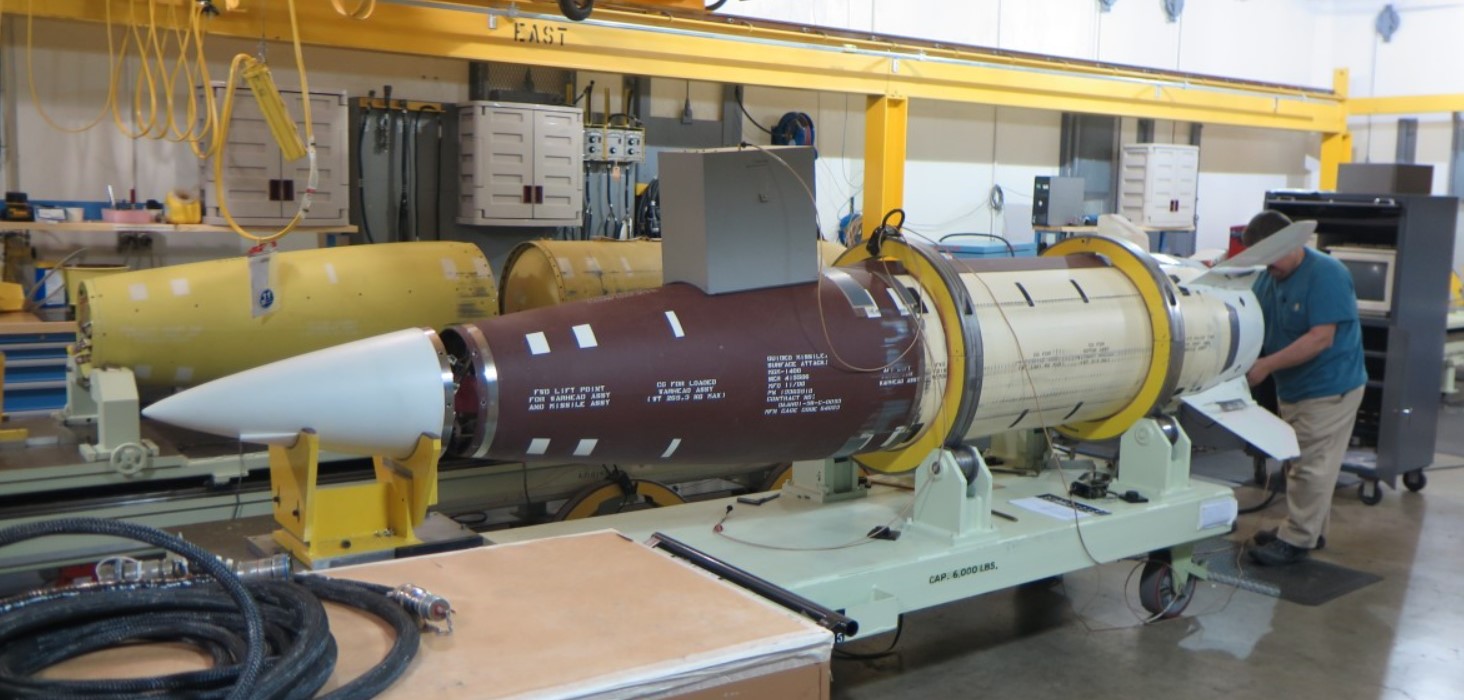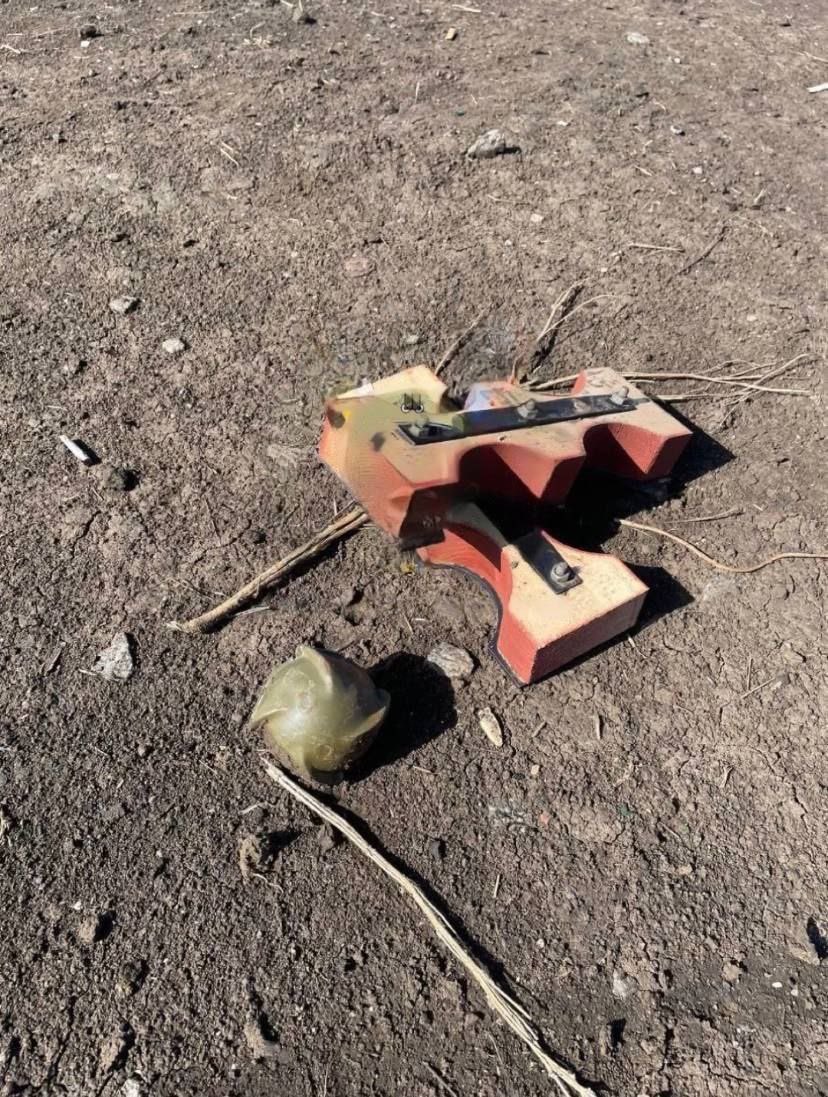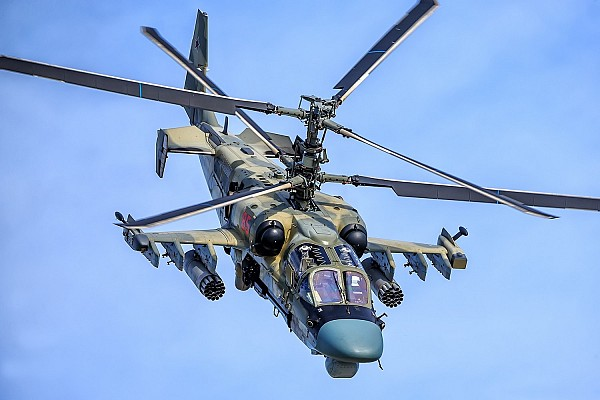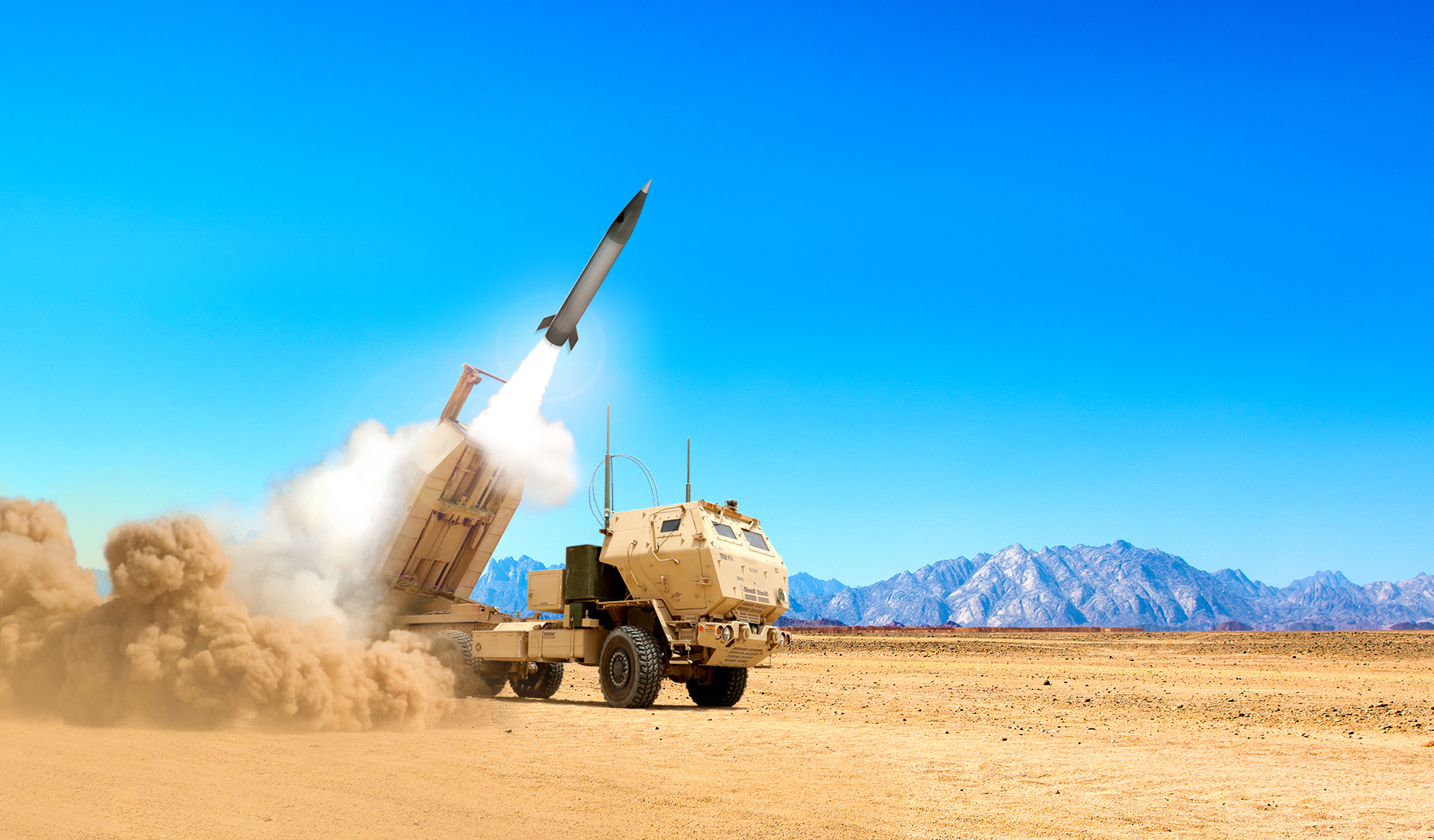By Tanmay Kadam
Ukraine will soon receive more long-range Army Tactical Missile Systems (ATACMS) from the U.S. after the U.S. House of Representatives passed a legislation approving more than $60 billion in aid to Ukraine on April 20.
"Today we have a result: everything has been decided in the ATACMS negotiations for Ukraine," the Ukrainian President Volodymyr Zelensky said in a tweet on April 22.
Ukraine received its first batch of ATACMS in last autumn, which comprised around 20 missiles of the initial cluster variant of ATACMS, known variously as the M39 or the Block I.
The Ukrainian armed forces put these ATACMS to use for the first time in October 2023 against two Russian-occupied airfields in eastern Ukraine, destroying a large number of helicopters and other materiel, and demonstrating the truly game-changing capabilities of this weapon system.
 |
| An ATACMS missile being launched from an M270 MLRS Source: Wikimedia |
Ukrainians appear to have used around eight ATACMS missiles in this attack according to a video released by the Ukrainian ministry of defense which seems to show seven or eight M39s flying into the night sky. Each M39 rocket is known to carry 950 grenade-sized submunitions, which means 7,600 individual explosive munitions descended upon the Russian air base.
At least four launchers belonging to the Russian S-400 long-range surface-to-air missile battery have been confirmed as destroyed as per the imagery of ground at Dzhankoy air base that surfaced later. Additionally, the Ukrainian defense ministry claimed to have destroyed the S-400’s control center and four air-defense radars as well.
It is the ability of these cluster munition-packing ATACMS to disperse submunitions over a wide area which is a real gamechanger for the Ukrainian forces, as it allows them to blanket a large area with a single ATACMS and inflict extensive damage to the Russian military in terms of personnel and military equipment located in that particular area.
Whereas previously, the Ukrainian military had to rely mostly on ‘one-for-one’ weapon systems like HIMARS (High Mobility Artillery Rocket System), Storm Shadow cruise missiles, or kamikaze drones, etc, which have also proven very deadly on the battlefield but entail using separate munitions or drones for every single target like an aircraft, tank or different components of an air defense missile system.
Therefore, large scale use of ATACMS missiles by the Ukrainian armed forces can have significant operational impacts for the Russian military in Ukraine, which will be discussed later in this article after laying out the capabilities of this weapon system in detail in the following section.
Army Tactical Missile Systems (ATACMS)
ATACMS is a Cold War-era American tactical ballistic missile which comes in multiple variants, first two of which are cluster variants, variously known as the M39 and M39A1, the Block I and IA, and the MGM-140A and B.
The M39, as stated earlier, carries 950 M74 submunitions with a range of 25-165 kilometers, while the M39A1 is loaded with M74 300 submunitions and has a range of 70-300 kilometers. The M74 submunitions are basically anti-personnel/anti-materiel (APAM) bomblets containing a spherical high-explosive blast fragmentation charge.
According to a 2002 paper from the Center for Army Lessons Learned, these M74 submunitions are filled with composition B explosive filler and are covered by a steel shell, so after impact and detonation, each bomblet breaks up into numerous high-velocity steel fragments that are effective against targets such as truck tires, missile rounds, thin-skinned vehicles, and radar antennas.
 |
| ATACMS (Army Tactical Missile System) missile system Source: US Department of Defense |
While the size of the area across which these M74 bomblets are dispersed depends on the height at which it is released from the missile which can altered as per the intended density dispersion, a stated typical profile for a single M-39 missile would see it disperse its submunitions across a circular area of 33,000 square meters in total.
The later variants of the ATACMS, known as the M48s and M57s, are armed with unitary warheads consisting of a single 500-pound-class (approx. 227 kg) blast fragmentation charge that can take out singular and strongly fortified targets.
The ATACMS missile can reportedly travel at a supersonic speed of Mach 3.5, making it near impossible to intercept. This means that an ATACMS strike only becomes evident after impact when the missile’s target explodes. Also, it is the massive kinetic energy that comes with this supersonic speed that enables the ATACMS to successfully destroy fortified targets.
An ATACMS missile can be fired from the M142 HIMARS or the M270 MLRS, both of which Ukraine currently possesses and is using to fire M31/M31A1 Guided MLRS (GMLRS) rockets.
These GMLRS rockets are stored in the Launch Pod Container (LPC), which contains six rockets in total. For the ATACMS missile, the HIMARS and M270 MLRS use the Enclosure Assembly Launch Pod (EALP), which houses one missile.
How Large-scale Use Of ATACMS Could Impact Russia’s War In Ukraine?
The ability to destroy several personnel or military equipment spread across an area with a single barrage, or to take out fortified high value targets with a single munition, all far behind enemy lines, with a very hard to defend against missile system, would remarkably improve Ukraine’s prospects in its conflict with Russia.
With the help of ATACMS, Ukrainian armed forces can threaten all of Russia’s logistical channels, ammo dumps, air defense systems, aviation assets inside Ukraine and even in parts of Crimea or bordering regions inside Russia.
Take for instance the Ukrainian ATACMS strike in October 2023 against two Russian airbases at Berdyansk and Luhansk in eastern Ukraine, which took out several Russian helicopters, ammunition, and equipment at these bases.
As per the satellite imagery of these air bases that emerged later, at least 17 helicopters, including multiple Ka-52 Alligator attack helicopters, were probably damaged or destroyed by the ATACMS strikes. Other than that, Ukraine claimed to have destroyed a surface-to-air missile launcher, multiple vehicles and an ammunition storage site and to have damaged an airstrip.
This must have significantly lowered the number of attack helicopters available to the Russian forces in its offensive operations in the Luhansk and Zaporizhzhia regions. To put it in perspective, one must recall how, only months before this strike, the Russian Ka-52 attack helicopters operating from Berdyansk had proven instrumental in thwarting the Ukrainian gains during Kyiv’s counteroffensive in June 2023.
Pictures had also emerged of some unexploded submunitions on the ground at Berdyansk, which could have taken some time to safely clear before flight operations could resume at full capacity.
 |
| Unexploded ATACMS Cluster Submunition at the Berdyansk airfield Source:Platform X |
Russia could respond to this new development by constructing hardened aircraft shelters for its aircraft but then the Ukrainian forces could use ATACMS missiles with unitary warheads or other type of stand-off weaponry already available to them such as the France/UK-supplied SCALP EG/Storm Shadow missiles to destroy these hardened shelters.
So, perhaps, the only option left with the Russian military is to pull back its various high value aviation assets to more distant airfields which would significantly limit their contribution to Russia’s war effort due to fuel and range limitations.
Following the ATACMS strike in October 2023 on Russian airfields in Luhansk and Berdyansk, there were unconfirmed Ukrainian media reports of Russia having relocated its aircraft to safer areas.
Similarly, even after the recent ATACMS strike earlier this month against Russia’s Dzhankoy air base, there were unconfirmed reports of Russia relocating its helicopters from Dzhankoi to the airbase at Kirovski in the eastern part of the Crimean Peninsula. The Dzhankoy air base has also been one of the most important military facilities for Russia’s war effort in Ukraine, serving not only as an active airbase but also as a logistics hub and repair facility.
 |
| Russian Kamov Ka-52 attack helicopter Source: Platform X |
So, the Russian military faces a real risk of losing significant ground to the Ukrainian troops in its occupied territories inside Ukraine, and that too in a very short span of time, once Kyiv steps up its ATACMS strikes on key Russian targets.
The ATACMS missile could also spell big trouble for Russia’s long-range S-300 and S-400 surface-to-air missile systems, especially in Crimea where majority of Ukrainian operations so far have been focussed on destroying the Russian air defenses to facilitate successful attacks on targets deeper inside the peninsula, for example, the Russian Black Sea Fleet.
For instance, the cluster variants of the ATACMS missile could inflict heavy damage to several naval ships of the Russian Black Sea Fleet which are said to be usually parked very close together.
The hundreds of APAM submunitions released from a single ATACMS missile could damage or destroy the various sensors and other components of these naval vessels, putting them out of action for months.
Would Ukraine Receive Enough ATACMS Missiles?
It is also important to consider the availability of these ATACMS to Ukraine. As of August 2023, the US Army reportedly had 1,486 ATACMS missiles in its arsenal, including 364 of the cluster variants that are no longer used by the US Army. However, the ATACMS with unitary warhead are still in use, and apparently, the US Army does not have enough of them at present to spare.
However, the US Army is working to field a more capable replacement, called the Precision Strike Missile (PrSM), within the next two years. The US Army has already received the first batch of PrSMs in December 2023 from Lockheed Martin, which is also the producer of ATACMS missiles. Also, the service awarded the company another $219 million PrSM early operational capability contract in March.
 |
| Precision Strike Missile (PrSM) Source: Lockheed Martin |
A total of 110 PrSMs are expected to be procured in 2024 and 190 in 2025, according to a Inside Defense report citing the US Department of Defense (DoD) documents. So, the more PrSMs US Army procures, more ATACMS with unitary warhead it can spare for Ukraine.
Furthermore, ATACMS are still in full-rate production, with Lockheed Martin under contract to produce 500 missiles per year, according to a report by The Washington Post in July 2023, however, all of them are planned for sales to foreign countries.
The security experts in the US have suggested in the past that Washington could ask one or more of those foreign countries to delay receipt so that Ukraine could get some of these missiles, and going ahead the US Congress could even allocate funds to purchase more ATACMS for Ukraine.
Tanmay Kadam is a geopolitical observer based in India. He has experience working as a Defense and International Affairs journalist for EurAsian Times. He can be contacted at tanmaykadam700@gmail.com

No comments:
Post a Comment